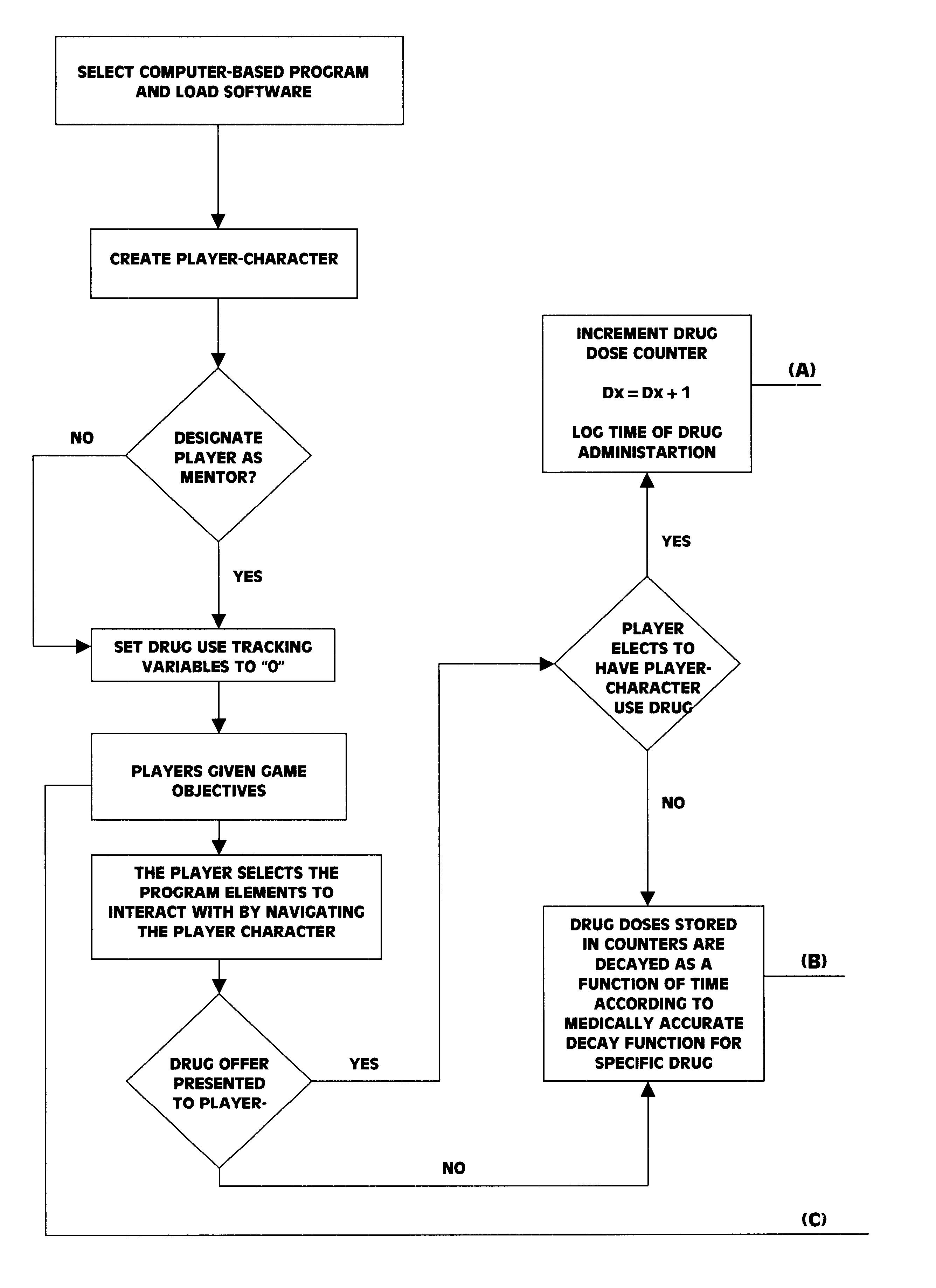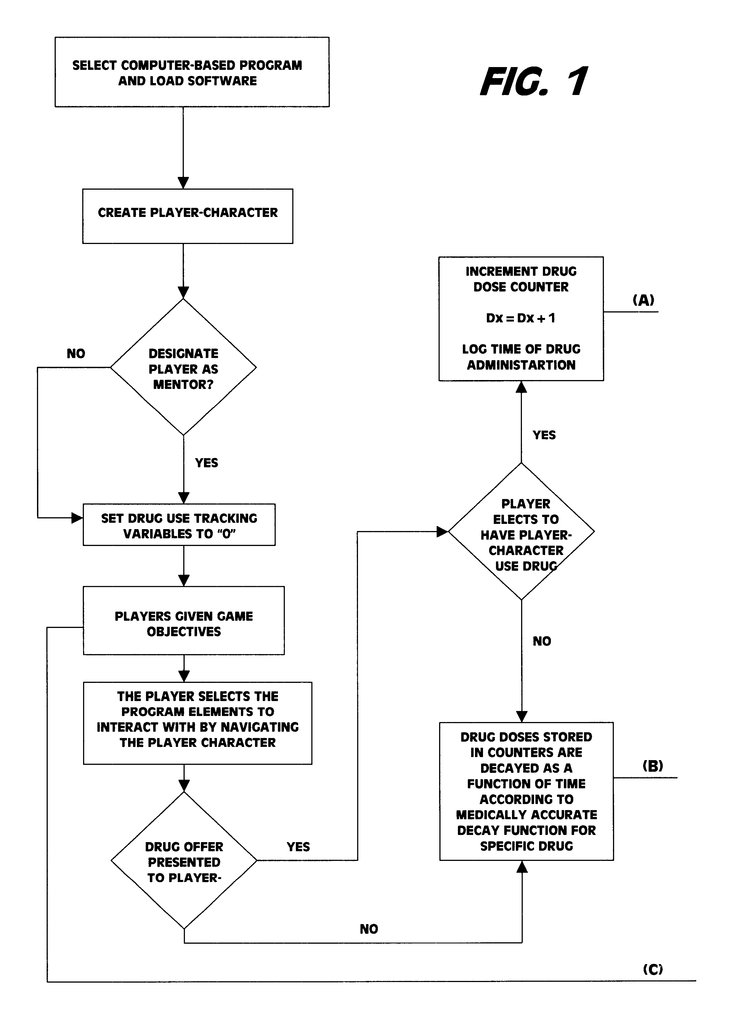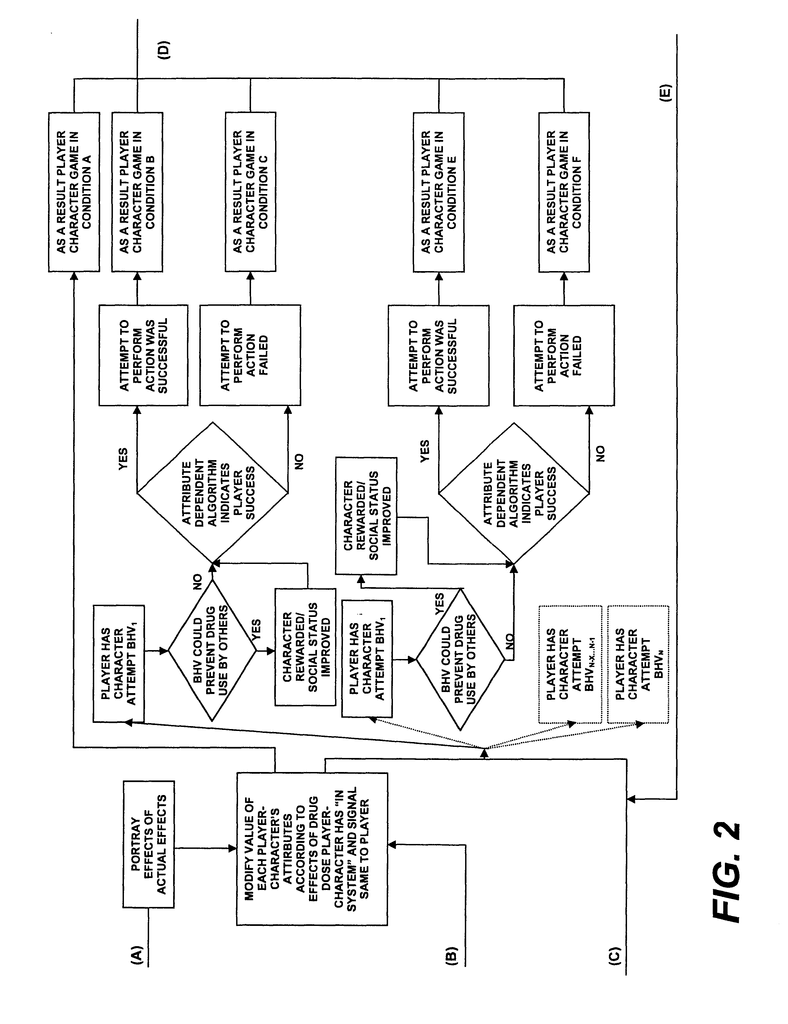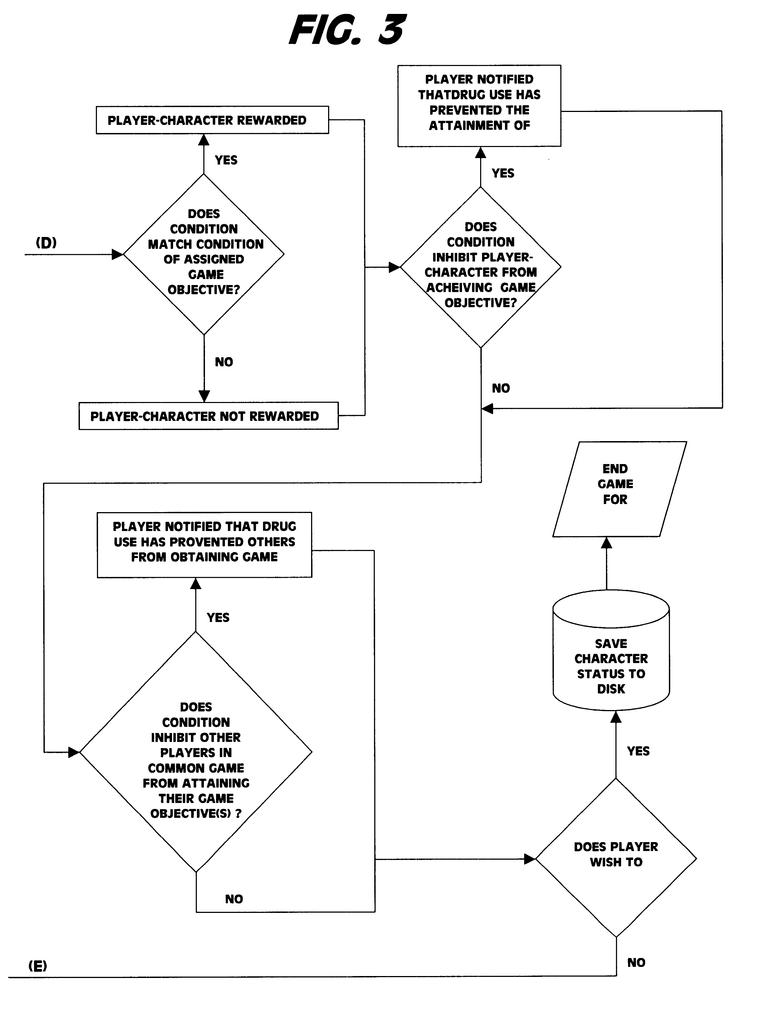Invented by Darion Rapoza, William Eldridge Urquhart, Entertainment Science Inc
The market for drug abuse prevention computer games is growing rapidly. These games are designed to educate and inform young people about the dangers of drug abuse in a fun and engaging way. They are interactive and often incorporate elements of adventure and strategy to keep players engaged.
The target audience for these games is primarily young people between the ages of 12 and 18. This is a critical age group as they are at a high risk of experimenting with drugs and alcohol. By educating them about the dangers of drug abuse, we can help them make informed decisions and avoid the pitfalls of addiction.
The market for drug abuse prevention computer games is diverse. There are games that focus on specific substances such as alcohol, tobacco, and marijuana. There are also games that cover a range of substances and provide a comprehensive overview of the dangers of drug abuse.
The demand for these games is driven by various factors. One of the main factors is the increasing prevalence of drug abuse among young people. According to the National Institute on Drug Abuse, approximately 24% of high school students in the United States have used illicit drugs in the past month. This is a concerning statistic that highlights the need for effective drug abuse prevention programs.
Another factor driving the demand for drug abuse prevention computer games is the growing popularity of video games among young people. Video games are a ubiquitous form of entertainment that young people enjoy. By incorporating drug abuse prevention messages into video games, we can reach a wider audience and make a greater impact.
The market for drug abuse prevention computer games is also driven by the need for innovative and engaging educational tools. Traditional methods of drug abuse prevention such as lectures and pamphlets are often ineffective and fail to capture the attention of young people. By using computer games, we can create a more engaging and interactive learning experience that is more likely to resonate with young people.
In conclusion, the market for drug abuse prevention computer games is growing rapidly. These games are an effective tool for educating young people about the dangers of drug abuse in a fun and engaging way. The demand for these games is driven by the increasing prevalence of drug abuse among young people, the popularity of video games, and the need for innovative educational tools. As we continue to develop and improve drug abuse prevention computer games, we can make a significant impact on the lives of young people and help prevent drug abuse.
The Entertainment Science Inc invention works as follows
The use of computer-based role playing games to simulate the effects of drug abuse on an individual, their family, friends and community. This allows players to learn from experience how to avoid the negative consequences of drug abuse by abstinence and by promoting abstinence among others. In role-playing, players can pretend to be characters in a story. It’s similar to being in a drama. Players take on the role of characters in a story and make decisions, saying what they would in certain situations. The game has objectives that the players must complete. Intervention involves portraying realistically the effects of substance abuse on the ability of an individual or group to meet the game objectives. Players are rewarded both for avoiding drugs and helping other characters to avoid drug use. In the safe environment of the role-playing games, conditioned learning can be used to teach the players how to avoid substance abuse. They learn through experience the effects of drugs, the adverse consequences of using drugs, and how to resist the pressure to use drugs.
Background for Drug abuse prevention computer game
Research on the effectiveness and efficiency of drug abuse interventions has identified key components of effective drug prevention programs. These key components include:
1) The approach must be research-based/theory-driven. The research that is based on the testing of theories and hypotheses, as well as incorporating them successfully into tests, allows for interventions to be designed that are based on proven methods.
2) The information should be developmentally appropriate.” “Children and adolescents will be more interested in current information than future effects.
The training of social resistance skills should be included. These programs prepare people to recognize peer pressures for drug use and teach them how to resist that pressure while maintaining friendships.
4) Interactive teaching methods should be used.” “Successful drug abuse resistance curriculum tends to use small group activities, discussion and role-playing to encourage active participation.
5) Adequate coverage, and adequate follow-up. The effectiveness of interventions to prevent subsequent substance abuse increases as the intervention’s key components are exposed more often. It also decreases with time.
6) Evaluation. “It is essential to be able evaluate the success and effectiveness of an approach in order to show its effectiveness. It is also important to identify key components that make the approach effective, so they can be better exploited for future revisions.
7) Participation of peer groups in the teaching process. There has been widespread reporting that using peers to deliver information on substance abuse prevention greatly increases program effectiveness. Oetting, and his coworkers, have also suggested that peer clusters, defined as a small group of people who share similar beliefs and values, can mediate the impact of other psychosocial factors on drug abuse.
8) Correlations identified with substance abuse that are likely to be causal in either facilitating substance abuse or preventing it should be addressed. Contrary to popular belief there is little correlation between drug use and knowledge of the medical effects. However, these same data show a strong correlation between the perception that drug use conflicts with an individual’s goals and their abstention from trying drugs. Data suggest that prevention efforts need to emphasize the incompatibility between substance abuse and achieving life goals and the negative psychological effects of drug use.
The present invention is a method of preventing substance abuse by incorporating the principles of operant psychology, such as differential reinforcement, conditioned avoiding, and stimulus generalization. It also incorporates several theories that have been proven in the social psychology field. In general, embodiments of this invention can be implemented on console or computer-based game platforms in a variety of formats, including action/adventure games, sports, and various skill-based games (such as “shooter”). In general, embodiments of the invention can be launched on computer or console-game platforms, in game formats including: action/adventure, sports, various games of skill (?shooter? Role-playing and other games. The preferred embodiment is a multi-user, Internet-based role-playing video game. The invention’s principal benefit is that it allows users to experience a substance abuse intervention based on research and theory in an accepted, engrossing medium, video games.
The arrival of the Internet has made possible a new, highly social genre of computer-video games, the ?competitive/cooperative, virtual community role-playing game.? This type of game allows thousands of players to interact in a ‘virtual’ environment. environment. In role-playing (RPG) games, players take on the personas and actions of fictional characters who live in the world created by the designer. These personas are termed player-characters (or P-Cs), and are distinguished from non-player-characters (NP-Cs) that are generated by the computer and are elements of the game itself. Players put themselves into the character’s shoes and react to other characters, human or computer-controlled, as well as the “world”. They react to the?world? around them. Each character has its own set of’statistics’ or characteristics. The program uses a set of’statistics’ or ‘characteristics, which are usually numbers (but could be any descriptive term) to define the character. These are numbers, but could also be described as any other descriptive term. They are used to determine the character’s abilities to perform various tasks within the game. A?Strength’ stat, for example, could determine a character’s ability to lift a heavy object. For example, a?Strength? A stat could determine how long it takes a character learn a new language. Characters are usually given a list of “skills”. For example, the ability of a player to speak a second language or program a computer. In a role playing video game, the player controls his avatar, which is a representation of their character in the game that can be seen by all other players. The algorithm determines if a character’s stats or skills are used to determine whether the character succeeds in the attempt. Some of the P-Cs’ abilities to perform certain tasks within the game could also depend on the player’s ability to use the keyboard, joystick or other devices in order to interact with video display.
In general, 3-8 players will play at the same time, and the P-Cs will embark on missions and tasks that will only be completed by working together as a group. It is, however, contemplated that the present invention may also be played by one human player-character and other non-player-characters controlled by the computer. A group of people can band together to form a “community” and work towards a common goal (e.g. the overthrow or a hostile government). In the game, players can develop their characters (groups, communities, etc.). Skills, fortunes and power can be accumulated through game play. In the same way, mistakes (such a drug use) may have lasting effects on a character’s (or group’s) life. The character (or group) of the player will also have to deal with long-lasting effects. Characters that have not been killed in the gaming session are saved at the end. This allows them to grow and survive for months or even years. A character that is killed in the game will be permanently lost and the player must create a new one. Players of these games are often very protective of their “well-developed” characters. Players of such games often become quite protective of their?well developed?
The present invention incorporates computer-simulated environments that allow a user to experience and participate through their player character, in differential reinforcement, condition avoidance, conditioning reinforcement, and generalization. The advent of this new video game genre allows for the incorporation of a variety of effective drug abuse prevention components into these games. The preferred embodiment of this invention includes an example such as:
Mike’s Astroman invites his friends on a risky but lucrative quest. He drinks a lot of beer while he tells his story. They all depart together in Astroman?s hovercraft after planning their strategy. Mike (or Astroman) is initially amused to discover that Mike’s driving abilities are impaired due to Astroman being drunk. The hovercraft crashes when Astroman loses control. He and his friends do not survive. Mike is devastated, as he has spent months developing the character of Astroman. Mike is even more upset when he hears from his gaming partners Jim and Michelle who have invested even more time in their characters and may not have noticed how much Mike made Astroman drink in the tavern. . . ?
Astroman’s story may influence Mike years after he has forgotten his drug education lessons from school as he thinks about driving home drunk on New Year’s Day. We accurately model the effects of drugs in our game, without ‘educational exaggeration. We hope to reach people who dismiss other anti-drug campaigns as hysterical, inaccurate and uninformative (e.g. the movie “Reefer Madness”). We expect to reach individuals who dismiss other drug abuse resistance campaigns that all too often may appear hysterical and inaccurate (e.g. the movie?Reefer Madness? The classroom lecture may be too dry or detached from reality to make an impact on the audience (didactic). Total immersion is achieved through the “total immersion” The virtual community role-playing games will allow players to learn through the ‘total immersion’ The virtual community role-playing game will teach players not only by the consequences of their own actions, but also through discussions and peer pressure generated by experienced players who want to see their plant (city, colony, etc.) grow and profit.
The video game, which is the invention, portrays drug abuse either directly (if a player-character uses drugs in the game), or indirectly (if another player-character (human or computer controlled) uses drugs and the player witnesses the result). Players can use their knowledge of drug effects to achieve game objectives. The game provides a variety of ways to obtain this information. The present invention, for example, includes a display that shows a character’s vitals signs and authority figures such as doctors, police officers, professors at universities, etc. From which you can get accurate information and sound advice. The player can learn about the effects of drugs through self-initiated inquiries and “virtual experiences”. The player is able to avoid drugs and use conditioned avoidance in order to change their attitudes.
Our invention uses the behavioral principle of condition avoidance, by attaching negative consequences for the abuse of alcohol and drugs simulated in the game. The game maximizes the effectiveness and efficiency of the conditioned-avoidance procedure, by basing drug avoidance on a primary reinforcer that is highly motivating (protecting one’s P & C). It also maximizes the opportunities to experience contingencies embedded within the game by encouraging prolonged game play. Contrary to classroom teaching or role-playing in the classroom, players experience the negative consequences of drug abuse. Drug abuse, as accurately depicted, will negatively affect the ability of their game character to meet life goals and thrive, just like in real life. The present invention accurately depicts the negative effects that drug abuse has on the life goals of other players, even when they are not abusing substances. The stimuli (e.g. cocaine) of the drug are accurately portrayed by accurately depicting the effects and alcohol without exaggeration. The stimuli (e.g., cocaine) that are modeled in the video game will be more similar to the stimuli in real life. Accurately modeling drug effects will increase the likelihood that stimuli generalization will occur (from game “cocaine” to real cocaine). Accurate modeling of drug effects will also enhance the likelihood of stimulus generalization (from game?cocaine? to real cocaine), and the conditioned avoidance in the real-world. If players see what they already believe to be true about drugs accurately depicted in the game, then they are more likely to accept the lessons that they learn within the game. The negative effects of substance abuse may not be experienced in every instance of drug use. Therefore, the negative consequences are presented in a scientifically-accurate, probabilistic manner. The aversive stimuli will be paired with virtual drug usage on a schedule of VR or VI. According to the operant theory, this should increase resistance to the extinction of the conditioned avoidance (prolonging the longitudinal effectiveness).
The computer game will also include the following interventions strategies:
1) The same innovation will deliver developmentally-appropriate information about drugs. Children and teenagers are more interested than adults in immediate information. The game allows them to experience the possible outcomes of substance abuse in a virtual environment.
2) The invention of the game develops social resistance skills in players. The game incorporates scenarios where player characters are given the chance to resist social pressures for drug use. Differential reinforcement is programmed in the game to reward those who resist or help other players resist temptations to try drugs. The game will have negative consequences for players who don’t resist the temptation or do not help other players resist it (conditional avoidance). The anonymity provided by the Internet allows players to develop their resistance skills.
3) The invention of the game promotes discussion between players about the effects of substance abuse. Players can benefit from interactive teaching opportunities by using player-characters who are clearly identified as possessing authoritative knowledge about the effects of drugs, and how characters might be affected. Artificial intelligence (AI) or online “mentors” can control these player-character authorities.
Click here to view the patent on Google Patents.




